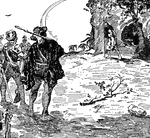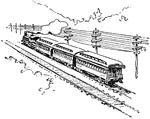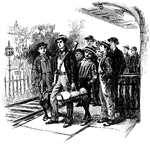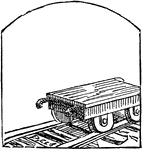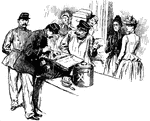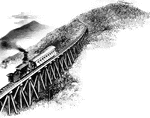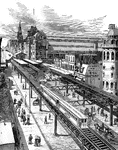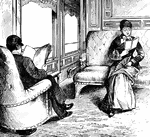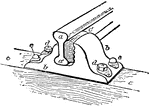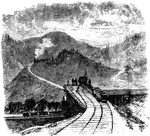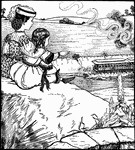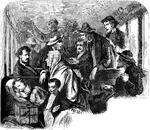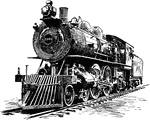
Baggage Train Wagon
"Federal baggage train on its way to the army at Falmouth, VA., December, 1862. Our illustration represents…

Passenger Train
"The first passenger locomotive built in the United States. A year after the Enterprise sailed for India,…
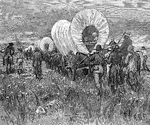
Western Train
"A western emigrant train. The occupation of the west. With every year the line of settlements was pushed…
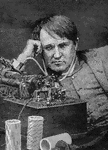
Thomas Alva Edison
"Thomas Alva Edison was born at Milan, Ohio, February 11, 1847, but the family soon after moved to Port…
American Locomotive
"Three locomotives were imported from England in 1829, and the first trial in America took place Aug.…

Early Locomotive
"Three locomotives were imported from England in 1829, and the first trial in America took place Aug.…

George Francis Train
Known as the "Citizen Train," he was a confidante of French and Australian revolutionaries.
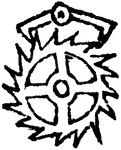
Escapement
"A crank which regulates the motion of the chief or escapement wheel of a train of clock-work worked…
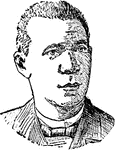
Booker T. Washington
An African American educator and author. He was born into slavery at the community of Hale's Ford in…

President Jackson Banner
An illustration of the seventh President of the United States, Andrew Jackson.

Passenger Depot
Passenger Depot of the Chicago and North-Western Railroad, corner of Wells and Kinzie streets.
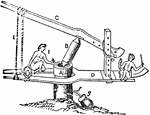
Chinapatam Sugar-mill
"The Chinapatam Sugar-mill consists of a mortar made by cutting down some hard-wood tree to within 2…

English House Clock
"A front view of a common English house clock with the face taken off, showing the repeating or rack…

Gravity Train Remontoire
"E represents the scape-wheel turning in a minute, and e its pinion, which is driven by the wheel D…

Montreuil Fan
"The Montreuil form of training. The principal feature is the suppression of the direct channel of the…

Dumontier's Fan
"The form of Dumoutier is merely a refinement on the Montreuil method. The formation of the tree commences…

Seymour's Fan
"Mr. Seymour's form approaches more nearly to the French method than any other practised in England,…
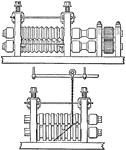
Two-high Trains
"Two kinds of successions of grooves used for rectangular bars in "two-high" train." — The Encyclopedia…

Magnetic Telegraph
"Morse magnetic telegraph will be understood by reference to the accompanying diagram, which represents…
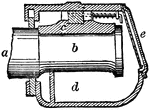
Axle Box
The box on a train which contains the bearings for the spindle of an axle, or joural of an axle.

Axle Box
The box on a train which contains the bearings for the spindle of an axle, or joural of an axle.
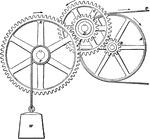
Train
"A combination of wheels and axles, as shown, is called a train. The wheel in a train to which motion…
!["Two motors are usually employed on each [electric railway] car, and the connection between them and the rails is made through the car-wheels and axles, and between them and the line wire, by a wire connected with a wheel called the <em>trolley.,/i> which is carried at the end of a pole supported on the car roof...." -Atkinson 1903](https://etc.usf.edu/clipart/42200/42289/el_railway_42289_mth.gif)
Electric Railway
"Two motors are usually employed on each [electric railway] car, and the connection between them and…
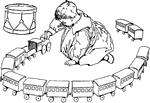
Child Playing With Train Cars
Illustration of a child playing with train cars. It can be used to write mathematics story problems…

3 Dolls In Train
Illustration of 3 dolls in a train. It can be used to write mathematics story problems involving addition,…
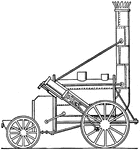
The Rocket
George Stephenson's locomotive, 'the rocket' was a great innovation towards the development of railroad…
Largest Locomotive
"Largest locomotive ever built. Designed for the Virginian Railway by the Baldwin Locomotive Works."…
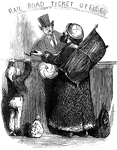
Man Purchasing Train Ticket
An illustration of a man purchasing a train ticket with a young boy standing next to him.
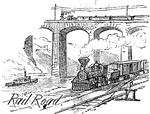
Train
A train is a connected series of vehicles that move along a track (permanent way) to transport freight…

City Transportation
"Transportation in a large city, showing elevated road, surface line, and subway." -Gordy, 1916

Peter Cooper's Train
Peter Cooper manufactured the first steam powered railroad locomotive made in America, which was called…
